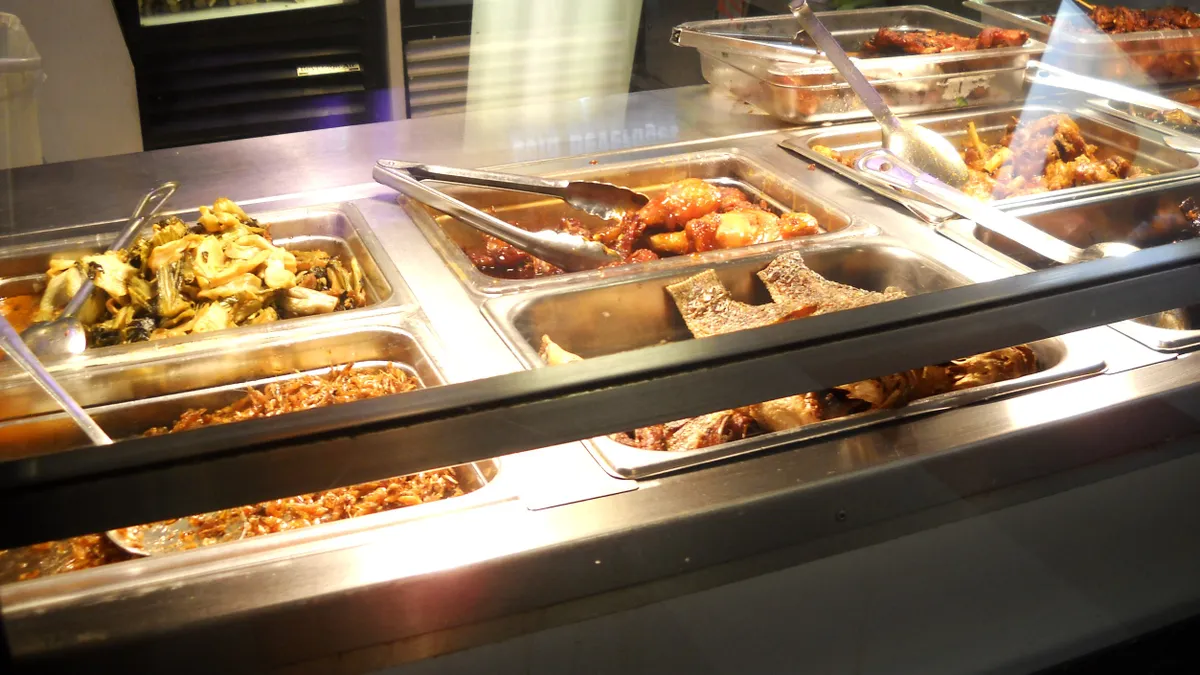Dive Brief:
- Supermarkets have been slow to promote prepared foods as part of their delivery and click-and-collect operations, instead focusing on partially prepared meals, such as take-and-bake pizza, and pre-made meals like sandwiches, according to Supermarket News.
- Bill Bishop, chief architect at Brick Meets Click, told the publication that there are opportunities for supermarkets to “creatively promote prepared foods at the point of pickup,” as click-and-collect services continue to expand in the industry.
- Research from The NPD Group shows that another major opportunity for grocers is to offer “blended meals,” including both traditional grocery items and ready-to-eat prepared meals. Demand for blended meals is expected to grow throughout the next five years.
Dive Insight:
Restaurants and grocery stores are competing cross-channel for online food dollars. But while most consumers view restaurants as meal experts and grocery stores as the place to go to fill their fridges and pantries, there's a category that's getting lost in the shuffle: prepared foods.
It doesn't have to be this way. Grocers that have a strong prepared meal presence can compete with restaurants and other supermarkets by marketing themselves as a legitimate option for last-minute meals both at the point of click-and-collect pickup and on their websites.
Such top-of-mind messaging can repeatedly remind consumers of grocers’ ability to offer spontaneous meal solutions until it becomes intuitive for those consumers, especially since grocers only recently began focusing more seriously on their prepared foods offerings. Supermarket prepared food departments were identified as the fastest-growing segment of the foodservice industry just two years ago and there remains a learning curve that grocers can offer quick and easy meal solutions, just like restaurants.
But if grocers are to step up their game here, they’ll have to work with their providers to ensure they can offer a speedy delivery and appropriate packaging to maintain the integrity of the prepared meal in transit. Restaurant companies have been working for two to three years to get the packaging piece right and if grocers are jockeying for the same share of stomach dollars in the last-minute meal space, they’ll need to do the same. Shipt, for example, stores hot and cold items in separate insulated bags during the shopping and delivery processes.
Grocers will also have to approach their websites a bit differently, not only marketing their prepared meals but offering seamless ordering, too, which can be more complex than just adding basic grocery items to a cart. SpartanNash VP Tim Holt told Supermarket News, for example, that data accuracy in ordering prepared food online has been one of the company’s biggest challenges, especially configuring custom orders. Restaurants have the advantage here as their menus are the centerpiece of their websites.
But grocery stores have an advantage themselves: Consumers are already buying their household necessities at grocery stores – necessities that restaurants don’t offer – allowing them to kill two birds with one stone. The challenge here is that having a bigger cart can’t compromise delivery time, as speed remains critical in the meal solution space.
With more grocery stores adding delivery while also stepping up their prepared food offerings (88% of stores polled by FMI said they now have a corporate chef on staff), the time is ripe for grocers to go after restaurant delivery consumers who simply want convenience. But they have to put some investment behind marketing themselves as a prepared meal provider. According to Technomic, food delivery is projected to grow 12% per year throughout the next five years, so the investment will most likely be worth it.












